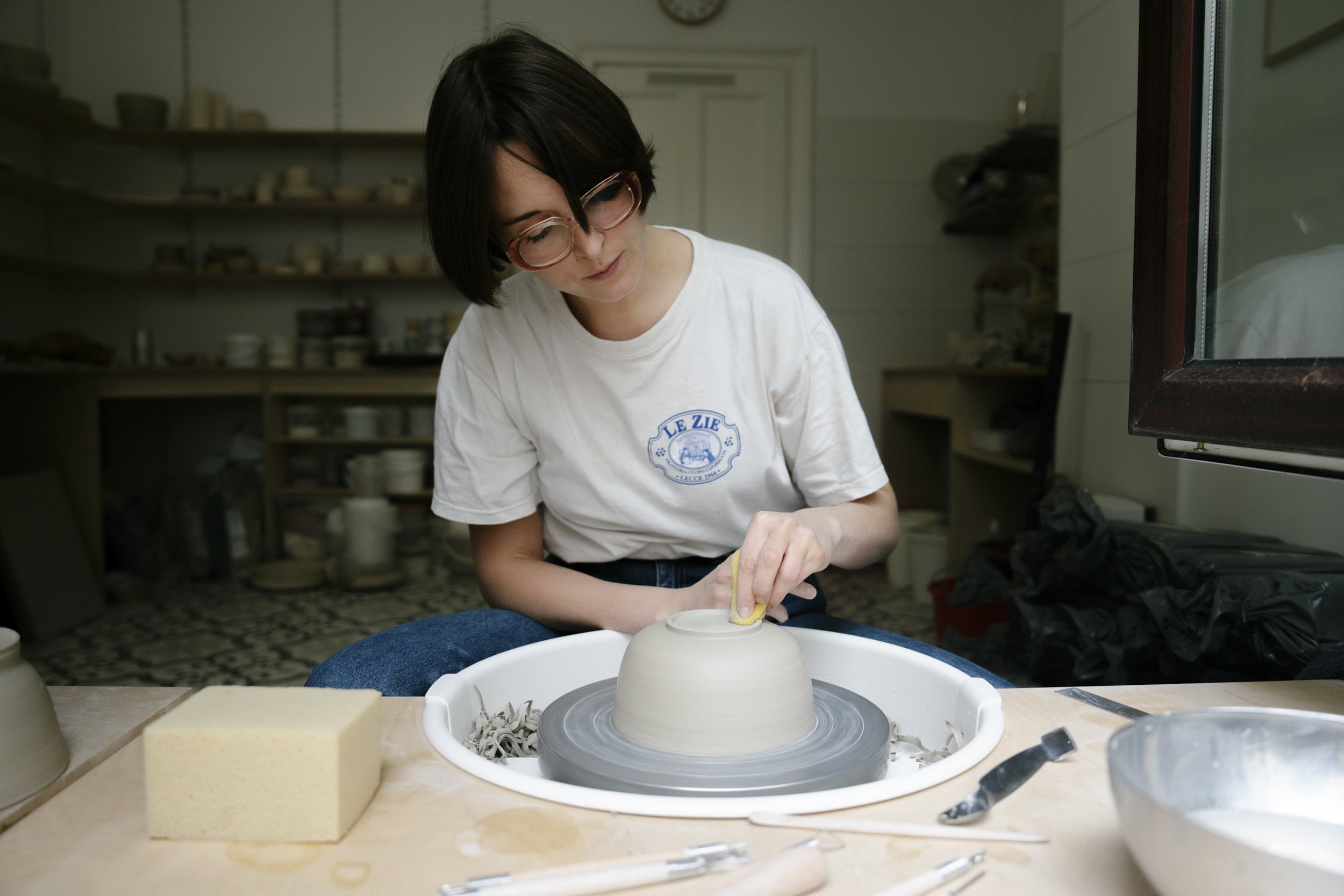Berlin's artisans
In a collaboration between SONY and Hotwire I ventured into Berlin's artisanal scene armed with the sharp Sony 24-70mm f/2.8 GM II lens. this assignment was about showcasing the lens's remarkable capabilities in capturing the intricacies of craftsmanship and creativity. From pottery entrepreneurs to woodworking ARTISTS, I immersed myself in the captivating world of visionaries.
Viviana passion for jewelry was ignited six years ago during a goldsmithing course. It was the diversity of participants, from an 84-year-old colleague to a 20-year-old student, that inspired her back then. The fire was lit, she persevered, and thus Kewl Jewl Krew was born.
Now her workshop is her sanctuary, where she quietly works on her jewelry pieces. Today, we find them not only on Instagram but also in selected boutiques: her rings have made it as far as Vienna and Rotterdam.
For those interested in jewelry design, Viviana has a simple piece of advice: Just start and take the first step. Apprehensions are meant to be overcome, and the key to success is authenticity. Jewelry, she says, is an art form that will never die out.
Martin is an interdisciplinary artist whose work is inspired by anthropocentric perspectives of nature. At the core of his artistic exploration lies the dynamic relationship between humans and their environments. From traditional bark weaving to augmented reality, Martin is willing to learn any technology necessary to convey his message.
Through his work, he questions discriminatory aspects of public design, emphasizes the importance of tracing material origins, and reminds humans that they are part of nature, rather than its opponent. . As an interdisciplinary artist, he employs a diverse range of media, from analog to virtual. During a visit to his studio, he showcased his most recent projects, including pixelated self-portraits made from birch skin and direct copies of tree trunks illustrated by his own hands using a 3D pen out of birch-filament.
Martin creates site- and context-specific sculptural installations that reference environmental issues and raise awareness of the planet's limits. He has just won the first prize in the public art competition for the Bauhaus Archive in Berlin. In his proposal he questions how the pioneers of the Bauhaus would address today's high resource consumption. As part of the work, he researches the origin of the three main materials glass, concrete and pine wood which he documents in video pieces. He aims to encourage people to understand the impact of design on public spaces and the environment, fostering a greater awareness of our interconnected world.
Lisa's brand Helka is more than just a pottery studio - here, craftsmanship and creative inspiration come together. Lisa's creative journey began as an escape from digital monotony. "I worked as a freelance copywriter, had little social contact, sat only in front of my computer screen, and wanted to create something handmade," she says. In a world characterized by the constant hustle of digital jobs, she found solace in working with ceramics. "At the beginning of the pandemic, pottery became a trend, a movement where people started to buy locally and become more conscious of their consumption," she explains. Yet, despite the ongoing trend, she struggled with the challenges of the craft. "It's difficult to determine the value of handmade pieces. On one hand, I want to keep them affordable, on the other hand, I need to pay myself and cover the costs of materials and energy." Despite all these ups and downs, Lisa remained patient, humble, and persistent. Her studio, Helka Ceramics, is not only a space for pottery art but also a place of learning and community. "It's amazing how dedicated the ceramics community is and how they support each other," she says.
During a vacation a bicycle accident extended Katia's planned trip and turned the German capital into her unexpected new home. Katia's artistic journey reflects a variety of experiences - from creating festival stages from recycled materials to discovering the overlooked beauty of everyday life through the viewfinder of her camera.
But Katia discovered her true passion in painting, more specifically the art of transforming walls into colorful masterpieces. She paints gradients, grains and cracks, her artworks adorn Berlin's walls and tell stories of the overlooked and unseen. She moved from the wall to the canvas when the desire arose for people to make her art accessible to all. Her works are not just an expression, but an invitation to consciously observe everyday life, from nature to the urban environment, and an opportunity to find inspiration in the most inconspicuous things. Through Katias eyes, we learn to discover the extraordinary in the ordinary, to appreciate the sublime in the mundane - a lesson in mindfulness and a celebration of the simple wonders of life.


























